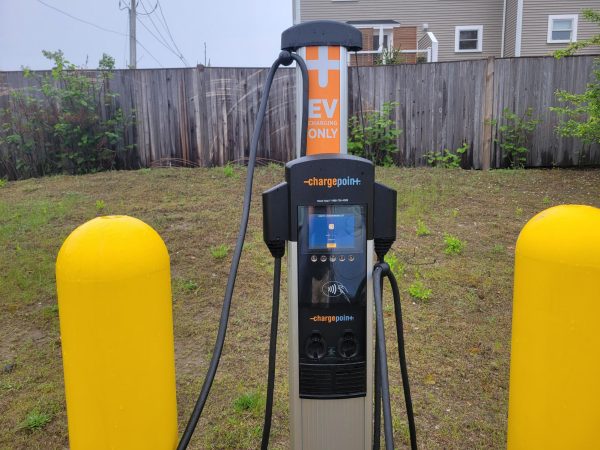Only twenty years ago a future in which all vehicles on the road were electric would seem inconceivable. Today the opposite is true. Internal combustion vehicles are under attack by environmentalists. Mass electrification of vehicles has been portrayed as not only an inevitability but also a possibility in the near future. Justin Rowlatt from the BBC claimed that we are currently in the midst of “the biggest revolution in motoring since Henry Ford’s first production line back in 1913.” Despite the overwhelming praise for EVs from the press, they almost always fail to discuss the practicality of mass electrification.
The average American drives approximately 14,000 miles per year. The median range for an internal combustion vehicle is 403 miles. Assuming that the average person refills their tank when there is a quarter left, the average person will refill their tank every 300 miles. This means that the average person refills their tank about 47 times in a given year. Assuming that it takes around 2 minutes to fill your gas tank, that means that the average person spends 1.57 hours refilling their gas tank per year. According to the Department of Transportation, Level 3 EV chargers add about 180-240 miles of range per hour of charge time. An EV owner who only uses Level 3 charging ports with a car that adds 240 miles of range per hour of charge will spend about 58.3 hours per year refueling their vehicle.
This means that optimistically an EV owner will spend around 37.4 times longer charging their vehicle than an internal combustion vehicle. In order for electric charging stations to not become overwhelmed with cars and not become backed up, they would essentially need 37.4 times the charging stations. There are about 1,200,000 gas pumps in the United States. A Level 3 charging station with 2 ports each costs about 50,000 dollars to install. So if every gas pump was replaced with a Level 3 charging port it would cost roughly 12 trillion dollars. That is almost half of the GDP of the United states for the charging infrastructure alone. While this example does not account for at home charging, it is simply here to demonstrate the tremendous amount of time and resources needed to convert refueling infrastructure from gas to electric.
All of this effort to electrify every vehicle does not even address the main problem EVs are attempting to solve. Electric vehicles are not inherently better for the environment than internal combustion vehicles. Excluding the emissions produced by the manufacturing process with our current electricity generation do not offer a dramatic reduction in greenhouse gas emissions. The electricity entering an electric vehicle for most of the developed and developing world is produced mostly by non-renewable sources. The greenhouse gas emissions are produced by a power plant rather than an internal combustion engine. EV enthusiasts often cite the fact that electric vehicles have over a 90% thermal efficiency and argue that no matter the power source they will produce less emissions. What they often fail to account for is the thermal efficiency of the power plant producing the electricity.
In the United states 81% of electricity generation is from fossil fuels. According to the Department of Energy as of 2016, 37% of the energy we produce comes from Oil, 15% comes from coal and 29% comes from natural gas. Oil power plants have a thermal efficiency of about 38%, natural gas 60% and coal only about 33%. The average efficiency of fossil fuel power plants is about 45%. By the time that reaches the EV’s electric motor about 90% of that remains.
The average thermal efficiency of an electric vehicle running on electricity produced by fossil fuels accounting for the power plant’s efficiency is only around 40%. This is not far off from the typical 20 to 40% seen in modern street cars. All of this is before accounting for the emissions of producing the EV’s battery which is an incredibly energy intensive process nor does this account for the greenhouse gas emissions produced by the mining of the precious metals needed to produce said batteries.
Despite what it may sound like however, the point of this paper is not to demonize electric vehicles and advocate for the use of internal combustion forever, but rather to push back on the narrative that internal combustion’s days are numbered. I do in fact believe that electric vehicles play a critical role in a sustainable future for humanity.
While a higher percentage of the vehicles on the road will be electric, the electrification of every vehicle is a long way out. While the technology is improving it will take a while longer for it to be financially viable.
Mr. Shippen elaborates on this, “companies are starting to test these things called solid state batteries that are made with graphene…the energy density will be much higher…in probably just a few years you will see EVs with a range of over a thousand miles and recharge in under 5 minutes….I would not [however] expect it to be an affordable EV anytime soon.” Once electric vehicle technology becomes advanced enough it will outcompete internal combustion vehicles on their own without excessive government incentivisation or regulation. The government’s effort and money should be put towards converting our electricity generation to sources with net zero emissions such as renewable energy sources or nuclear. The implementation of these renewable energy sources is what will make electric vehicles significantly better for the environment in the first place. Until then we will likely see a combination of electric and internal combustion vehicles on the roads.
Putting practicality aside, different people will prefer the characteristics of each vehicle type. EV enthusiasts such as Mr. Shippen prefers the instantaneous and constant torque delivery of EVs as well as the quietness. Mr. Shippen expressed his enthusiasm during our interview.
“I think the driving experience is far superior in an EV…I think that the response and the instantaneous torque [are amazing]…as well as the quietness of the ride.” IHS student and ICE enthusiast Aidan Kirkwood prefers the power to weight and character of an internal combustion vehicle. Adain stated, “When you’re driving a petrol vehicle you feel a lot more soul in it…when i’m driving along in my 50 odd year old car I feel the pistons moving and the combustion happening. I can feel the engine sending power when you hit the gas.” For this simple reason alone we will likely see both types of vehicles coexist for several decades at least.
A sustainable future does not only involve mass electrification. As a technologically advanced society we often believe that we can solve the problems created by technology with more technology. Ultimately we can solve the problems created by technology through a more humble and materially conservative lifestyle. An electric vehicle consumes energy just like an ICE vehicle does. That energy has to come from somewhere and no matter its source it will have a negative impact on the environment. Hydroelectric dams while producing no emission to operate wreaks havoc on the surrounding aquatic ecosystems. Solar panels do not produce greenhouse gas emissions either relying instead on the sun, however the precious metals needed to produce them damage the environment through the mining needed to recover them. While renewable energy sources are far better for the environment than the combustion of fossil fuels, the less we consume the healthier our planet will be.





